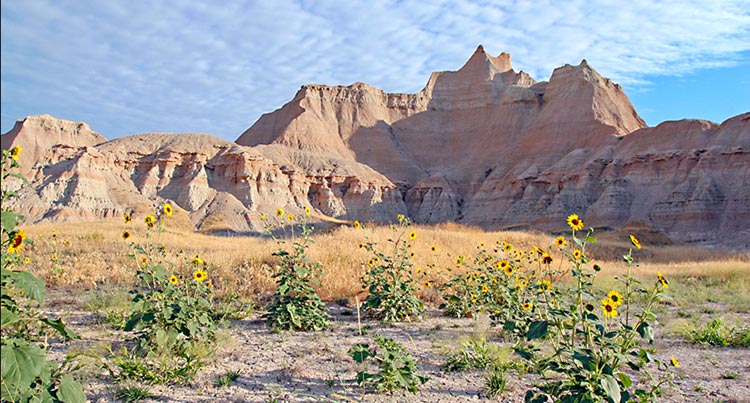You Did you know that more than half of the nation of Israel consists of desert?
This small country is mostly desert, and yet still has luscious greenery in the Galilee, snow on Mount Hermon, and a blooming fields. Let’s adventure into the deserts of Israel to discover treasures from the time of the Bible until today.
The land of Israel has four main deserts: Negev, Zin, Judean, and Araba. The desert locations and boundaries in Israel can be confusing because the exact biblical location and the modern location of these deserts differ due to the shifting boundaries over time.
The Negev
Let’s first visit the largest desert in Israel: the Negev. Located in the south of Israel, this desert region used to be pastoral lands in the time of the Bible. Nevertheless, it was left desolate for hundreds of years.
Yet, when Israel became a nation, the Jewish people developed this desolate land through irrigation. And today, you can literally see the fruit of their labor blooming in the desert!
“Restore our fortunes, Lord, like streams in the Negev.” Psalm 126:4-6
The largest city in the Negev is Be’er Sheva. This special biblical city is the place that our forefather Abraham lived. Today, you can visit a tourist site of Abraham’s Well and learn more about the life of Abraham.
Can a Desert be a Symbol of Promise?
One unique aspect about the Negev is that you can enjoy some incredible stargazing while considering the promise God gave to Abraham about the people and nation of Israel.
“Then the angel of the Lord called to Abraham from heaven a second time and said, ‘I swear by myself, declares the Lord, that because you have done this and have not withheld your son, your only son, I will surely bless you and make your descendants as numerous as the stars in the sky and as the sand on the seashore. Your descendants will take possession of the cities of their enemies, and through your offspring all nations on earth will be blessed, because you have obeyed me.’ Then Abraham returned to his servants, and they set off together for Beersheba. And Abraham stayed in Beersheba.” Genesis 22:15-19
Another treasure found in this desert region is Makhtesh Ramon or Ramon Crater. This is definitely a must-see when exploring the desert because it is the world’s largest erosion crater.
Other fun and adventurous activities to do in the Negev include: sandboarding, rappelling down the Ramon Crater, hiking, biking, Jeep excursions through the desert, camping under the stars, and more!
The Desert of Zin
Nestled inside the southern part of the Negev is the Desert of Zin. Today, this desert area is desolate and rocky. Yet, in Bible times it was a place that God chose to do a great miracle.
It was here in the Desert of Zin that Moses and the Israelites encountered God’s miracle of water coming out of the rock. Unfortunately, it was also a place where the Israelites rebelled and quarreled, and Moses and Aaron disobeyed God.
“’For when the community rebelled at the waters in the Desert of Zin, both of you disobeyed my command to honor me as holy before their eyes.’ (These were the waters of Meribah Kadesh, in the Desert of Zin.)” Numbers 27:14
Judean Desert: Ein Gedi, Masada, & Qumran
The Judean Desert stretches from the north of Jericho to the southern end of the Dead Sea. Breathtaking views of the still waters of the Dead Sea, stunning desert mountains, an ancient fortress, and waterfalls await you in this unique desert of Israel.
“Then will the lame leap like a deer, and the mute tongue shout for joy. Water will gush forth in the wilderness and streams in the desert.” Isaiah 35:6
If you want to see this verse in action, then come hike through the springs of Ein Gedi. Tucked inside these desert mountains are springs of water pouring out from the rocks.
You may recognize Ein Gedi also for its biblical history. This is the place where David sought refuge while running from King Saul.
“And David went up from there and lived in the stronghold of En Gedi. After Saul returned from pursuing the Philistines, he was told, ‘David is in the Desert of En Gedi.’ So Saul took three thousand able young men from all Israel and set out to look for David and his men near the Crags of the Wild Goats.” 1 Samuel 23:29-24:2
The biblical account continues that Ein Gedi was the place where David could have killed Saul, but instead he cut off a piece of Saul’s robe. When Saul discovered that David had spared his life, Saul spoke these powerful words over David:
“I know that you will surely be king and that the kingdom of Israel will be established in your hands.” 1 Samuel 24:20
The Land of the People
Another interesting site within the Judean desert is Masada. Located on a massive rock plateau, you will find ruins of an ancient fortress built by Herod the Great, King of Judea.
Many years later, during the Great Revolt of the Romans, the 960 Jews who had survived the revolt escaped to Masada for refuge.
Around 8,000 Roman soldiers entered the enclave to conquer them, but sadly they found that all of the Jews had killed themselves. The Jews preferring to take their own lives rather than face defeat by Rome.
Excavations of these ancient ruins began in 1963. Then in 1966, the site was declared a national park.
To get to the top of Masada, you can either tough it out through an intense hike up the mountain or you can enjoy a relaxing ride on the cable car. As you look out from this ancient fortress, you will see extraordinary views of the Dead Sea and the surrounding desert.
Masada also could have been a place in the wilderness where David sought refuge when hiding from Saul.
“David stayed in the wilderness strongholds and in the hills of the Desert of Ziph. Day after day Saul searched for him, but God did not give David into his hands.” 1 Samuel 23:14
Lastly, the Judean Desert was also the hiding place of the Dead Sea scrolls. The Essenes, a devoted group of people who left Jerusalem and moved to the desert to study the word of God, translated and copied the Bible and other writings on scrolls.
In 68 AD, when the Romans were taking over Israel, the Essenes hid these scrolls inside caves near the Dead Sea. In 1947, the scrolls were found in 11 caves. Today, you can visit the archaeological site in Qumran National Park to learn more about the Dead Sea Scrolls.
The Arabah Desert – Timna Valley
“This land extended from Aroer on the rim of the Arnon Gorge to Mount Sirion (that is, Hermon),, and included all the Arabah east of the Jordan, as far as the Dead Sea, below the slopes of Pisgah.” Deuteronomy 4:47-49
The Arabah desert has two different sides to it: biblical and modern-day. As described in the verse above, the biblical Arabah desert had boundaries from Mt. Hermon up in the Galilee down to the Dead Sea. Today, the Arabah desert extends from the Dead Sea down to Eilat.
Within the modern-day Arabah desert there is also a special place called Timna Valley. The park, known for copper mining and sandstone rock formations, attracts visitors for its rock climbing and outdoor performances.
A very unique site to see in Timna Park is a life-sized replica of the biblical tabernacle. It was built with the exact measurements that are described in the Bible.
“The word of the Lord came to Solomon: ‘As for this temple you are building, if you follow my decrees, observe my laws and keep all my commands and obey them, I will fulfill through you the promise I gave to David your father. And I will live among the Israelites and will not abandon my people Israel.’ So Solomon built the temple and completed it.” 1 Kings 6:11-14
Ben Gurion’s Love of the Deserts of Israel
Israel’s first Prime Minister, David Ben Gurion, had a great love for the desert. Especially, because he believed that the desert lands of Israel could bloom and bring prosperity to the rest of the nation.
Ben Gurion was a true pioneer, undaunted by difficulties. He believed that the Negev was “the Jewish Nation’s safe haven.” He said, “It is in the Negev where the creativity and pioneering vigor of Israel shall be tested.”
The start-up nation is certainly transforming the desert today. Whether through drip-irrigation and food production, water desalination projects, high-tech industry, or research innovation – Israel’s desert is in bloom.
Ben Gurion had such a great appreciation for the desert that he requested to be buried there and for his home to be open to the public. Today, you can visit Ben Gurion’s grave and home in Sde Boker in the Negev desert.
John the Baptist in the Wilderness
As we come to the end of our desert adventures, let’s take a look at a very important man who lived in the wilderness. John the Baptist was born in the hill country of Judea. Yet, before John was even born, he was given a very unique calling and destiny to prepare the way for the Lord.
John preached in the wilderness of Judea, wore clothes made of camel’s hair, ate locusts and wild honey, and baptized many in the Jordan River, including Jesus the Messiah!
“Then Jesus came from Galilee to the Jordan to be baptized by John. But John tried to deter him, saying, ‘I need to be baptized by you, and do you come to me?’ Jesus replied, ‘Let it be so now; it is proper for us to do this to fulfill all righteousness.’ Then John consented. As soon as Jesus was baptized, he went up out of the water. At that moment heaven was opened, and he saw the Spirit of God descending on him like a dove and alighting on him. And a voice from heaven said, ‘This is my Son, whom I love; with him I am well pleased.’” Matthew 3:13-17
In all of our desert adventures throughout the land of Israel, we can see the mighty hand of our God. Our Heavenly Father continues to do miracles in the wilderness. Now that you know a little bit more about these desert lands, we encourage you to come visit the biblical sites, come see the breathtaking views, and come taste the fruit blooming up from the deserts of Israel!
Visiting Israel: In the Footsteps of Jesus: Free PDF Download
It is quite exciting to think that while touring Israel you are walking on the same land that Jesus did.
Whether it is the reason why you came to Israel or not, it is worth noting which locations were significant to His life and ministry. God chose this piece of land to send His Son to live on earth. Many archeological findings confirm the locations mentioned in the Bible.
Get this PDF
Articles Related to Deserts in Israel
En Gedi in the Bible: A Place of Refuge
What Can We Learn from the Dead Sea?
Wilderness Meaning in the Bible: The Importance of Desert Seasons
A Way in the Wilderness // Streams in the Desert
The Kingdom of God and the History of Israel
Estimated reading time: 8 minutes
The post Deserts in Israel in the Bible and Visiting Them Today appeared first on FIRM Israel.



